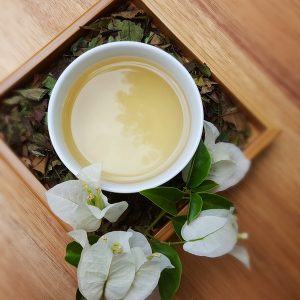Tagged: maturing-puer, puer, sheng-cha
- This topic has 6 replies, 5 voices, and was last updated 10 years, 6 months ago by
Leo.
-
AuthorPosts
-
-
2013.11.14 at 9:18 am #8617
sofie1212
ParticipantI mean it has turned very dark, not grassy, much less astringent, and has that kind of sweetness like a shu cha, is it still a sheng cha? Because sheng cha is supposed to be lighter and a lot TCM cold and damp, and after it is matured, it is not so much so, right? And how should such a tea be categorised, lightly oxidised or post-fermented?
-
2013.11.15 at 9:12 am #10074
Amuk
ParticipantI like this question. Now we know that natural oxidation and exposure to the elements were the way how puerh used to become dark tea. How does it really define now and is there a line when a raw tea becomes dark?
-
2013.11.16 at 10:41 am #10075
CHAWANG
Participant-_-‘
-
2013.11.16 at 10:48 am #10076
CHAWANG
Participantsome people say puerh is puerh, a different category as puerh, not anything else. i think this is not correct, because new sheng puerh is absolutely not the kind of dark tea people think when the name of puerh is said. leo’s idea of sheng puerh is lightly oxidised and shu puerh is dark is good idea, but this sofie1212 question makes very good point. i sell sheng puerh over 3 yrs as puerh and newer than 2 yrs as sheng cha. but i cannot really say 3 yrs is a good enough point for the tea to become dark. need many more yrs. how many yrs? i cannot say. some dark faster, others not so fast.
-
2013.11.17 at 6:47 pm #10077
zachno
ParticipantI tried some expensive raw pu-er today and it was even lighter color than the picture in this site as I have linked it below. It would be difficult for me to accept it as the same kind of tea than the dark color, sweeter kind of pu-er that I have begun to like. If what is suggested here and in the articles by Leo is true, I wonder how the light color tea can turn into the kind of dark color tea, and how long it takes.
-
2013.11.20 at 10:41 am #10079
Leo
ParticipantThis is a great question. As some of you have already pointed out, as a shengcha pu’er comes into contact with the elements and begin to go through slowly the process of post-fermentation, it gradually turns into a dark tea, in the same category as shu cha pu’er. As to at which point it is a dark tea, initially I have wanted to work with scientists or perhaps if there are already existing datas, to come up with a definition. However, I do have some other things to ponder about too and would like to give a definition that covers a few perspectives.
Do remember that though, the post-fermentation process with which each batch of shengcha — be it in compressed forms or loose leaves — transforms, is very likely to differ dramatically to another. This, plus the different nature of the original leaves, is going to yield extremely varied final chemistry of the tealeaves.
The Taiwan study which datas I have quoted in this article: https://www.teaguardian.com/tea-health/puer-health-sheng-cha-or-shu-cha-1.html, reflects only a small fraction of the huge variety of products labelled as pu’er in the market. However, it does give a general idea as to the gradual change of chemistry as the tea slowly darkens.
It would be a bit irresponsible not to give a temporary solid answer to Sophie’s question, so I’ll say from a user’s point of view in judging whether a shengcha is TCM a bit milder. Not by the leaf colour, esp when it’s a compressed form. The infusion colour is a bit more reliable. Do a 3g to 150 ml 5-minute infusion test. The taste should be sweet, the colour should be very dark with refractions showing colours from deep brown to deep red. This is of course for tasting test; you can adjust the concentration in daily consumption.
-
2013.11.20 at 10:42 am #10081
Leo
ParticipantI’ll do a more serious writ up about the topic. Thanks for the inspiration.
-
-
AuthorPosts
- You must be logged in to reply to this topic.










